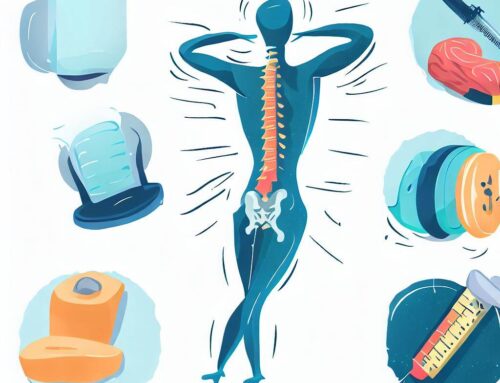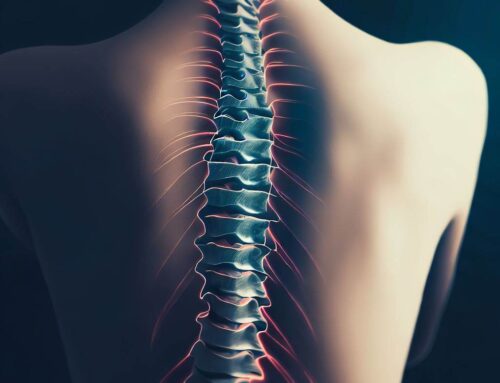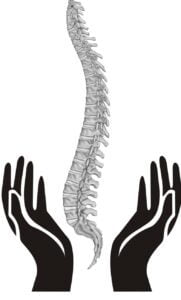Kyphosis, also known as round back or hunchback, is a spinal disorder that causes the upper back to curve excessively. This condition can cause pain, discomfort, and difficulty in breathing, but there are several ways to manage it. In this blog post, we’ll discuss tips for living with kyphosis, including managing pain, improving posture, and incorporating exercises.
What is Kyphosis?
Kyphosis is a condition where the spine’s natural curve in the upper back becomes exaggerated. It can cause the vertebrae to compress and curve forward, leading to a hunchback appearance. The condition can be caused by several factors, including poor posture, osteoporosis, spinal cord tumors, and Scheuermann’s disease.
Poor posture is a common cause of kyphosis. This is particularly true in today’s society where many people spend long hours sitting in front of a computer, which can cause them to hunch forward. Osteoporosis, a condition that causes bones to become brittle and weak, can also contribute to kyphosis. As the bones become weaker, they can fracture, leading to spinal deformities. Spinal cord tumors and Scheuermann’s disease, which is a condition where the vertebrae grow unevenly, can also cause kyphosis.
Managing Pain
Kyphosis can cause pain and discomfort, particularly in the upper back, shoulders, and neck. The pain can be constant or intermittent and may worsen with certain activities, such as sitting or standing for long periods. If you’re experiencing pain due to kyphosis, there are several ways to manage it.
Over-the-counter pain relievers, such as ibuprofen or acetaminophen, can help relieve mild to moderate pain. In some cases, your doctor may prescribe stronger pain medication, such as opioids. However, it’s important to use these medications only as directed by your doctor, as they can be addictive.
Heat therapy can also be an effective way to manage pain caused by kyphosis. Applying heat to the affected area can help relieve muscle tension, increase blood flow, and reduce pain. You can use a heating pad, or hot water bottle, or take a warm bath or shower to apply heat.
In some cases, physical therapy may be recommended to manage pain caused by kyphosis. A physical therapist can teach you exercises to strengthen your back muscles, improve your posture, and reduce pain.
Improving Posture with Kyphosis
One of the most effective ways to manage kyphosis is to improve your posture. Good posture can help reduce the strain on your back muscles and prevent further spinal deformity. Here are some tips for improving your posture:
- Sit up straight: When sitting, make sure your back is straight and your shoulders are relaxed.
- Use a lumbar roll: A lumbar roll is a cushion that supports the natural curve of your spine. Place it between your lower back and the chair to improve your posture.
- Stand tall: When standing, keep your feet shoulder-width apart and your knees slightly bent. Pull your shoulder blades back and down, and tuck in your chin.
- Use a standing desk: If you work at a computer for long hours, consider using a standing desk. This will help you avoid hunching over your computer and improve your posture.
- Stretch: Regular stretching can help improve your posture and reduce pain. Try stretching your chest, shoulders, and back muscles regularly throughout the day.
Incorporating Exercises
Exercise is an essential component of managing kyphosis. Regular exercise can help strengthen your back muscles, improve your posture, and reduce pain. Here are some exercises that can be effective for managing kyphosis:
- Wall angels: Stand with your back against a wall and your arms outstretched at shoulder level. Slowly raise your arms above your head and back down, making sure to keep your back flat against the wall.
- Cat-cow stretch: To perform the cat-cow stretch, start on your hands and knees and alternate between rounding and arching your back. Exhale as you round your back and inhale as you arch it. This stretch can help to release tension in your muscles and elongate your spine.
- Thoracic extension: Lie on your back with a foam roller or rolled towel under your shoulder blades. Raise your arms above your head and stretch them back towards the ground. Hold for 30 seconds and repeat.
- Shoulder blade squeeze: Sit up straight with your arms at your sides. Squeeze your shoulder blades together and hold for five seconds. Release and repeat.
- Resistance band row: To do a resistance band row, secure one end of a resistance band to a stable object at waist height. Grasp the band with both hands, palms facing each other, and pull it towards your chest while squeezing your shoulder blades together. Then, release the tension and repeat the movement. This exercise can help strengthen your back muscles and improve your posture.
It’s important to note that you should always consult with your doctor or a physical therapist before starting any new exercise program. They can help you determine which exercises are safe and effective for your specific condition.
In addition to these exercises, low-impact activities like swimming, cycling, or walking can also be beneficial for managing kyphosis. These activities help to strengthen your back muscles and improve your posture without putting undue stress on your spine.
Other Ways to Manage Kyphosis
Another important way to manage kyphosis is to address any underlying causes of the condition. In many cases, kyphosis is caused by osteoporosis, a condition that weakens the bones and can cause fractures. If you have osteoporosis, your doctor may recommend medication to help strengthen your bones and prevent fractures. You may also need to take supplements like calcium and vitamin D to support your bone health.
Another common cause of kyphosis is poor muscle tone in the back and abdomen. If this is the case for you, your doctor may recommend physical therapy to help strengthen your muscles and improve your posture. A physical therapist can teach you exercises that target the muscles in your back and abdomen, as well as stretches to improve your flexibility and reduce pain.
In some cases, surgery may be necessary to correct severe cases of kyphosis. During surgery, the surgeon will realign the spine and use metal rods or screws to hold it in place while it heals. Recovery from surgery can take several months, and you will likely need physical therapy to regain strength and flexibility. It is important to consult with the best spine surgeon in India for kyphosis.
Address emotional and psychological issues
In addition to managing the physical symptoms of kyphosis, it’s also important to address any emotional or psychological issues that may arise. Living with a visible deformity can be difficult, and many people with kyphosis experience anxiety, depression, or low self-esteem. If you’re struggling with these issues, it’s important to seek help from a mental health professional. They can help you develop coping strategies and improve your self-esteem.
Living with kyphosis can be challenging, but with the right management strategies, you can reduce your symptoms and improve your quality of life. By addressing the underlying causes of your condition, improving your posture, and incorporating exercises, you can manage your kyphosis and enjoy a more comfortable, active lifestyle. Remember to always consult with your doctor or a physical therapist before starting any new exercise program, and to seek help if you’re struggling with emotional or psychological issues related to your condition. With the right support, you can thrive despite your condition and live life to the fullest.
Conclusion
Kyphosis can be a challenging condition to live with, but there are several ways to manage it. By managing pain, improving posture, and incorporating exercises, you can reduce the symptoms of kyphosis and improve your quality of life. If you’re experiencing pain or discomfort due to kyphosis, it’s important to speak with the top spine surgeon in Bangalore. They can help you determine the underlying cause of your condition and develop a treatment plan that’s right for you. With the right management strategies, you can manage your kyphosis and enjoy a more comfortable, active lifestyle.








Get Social